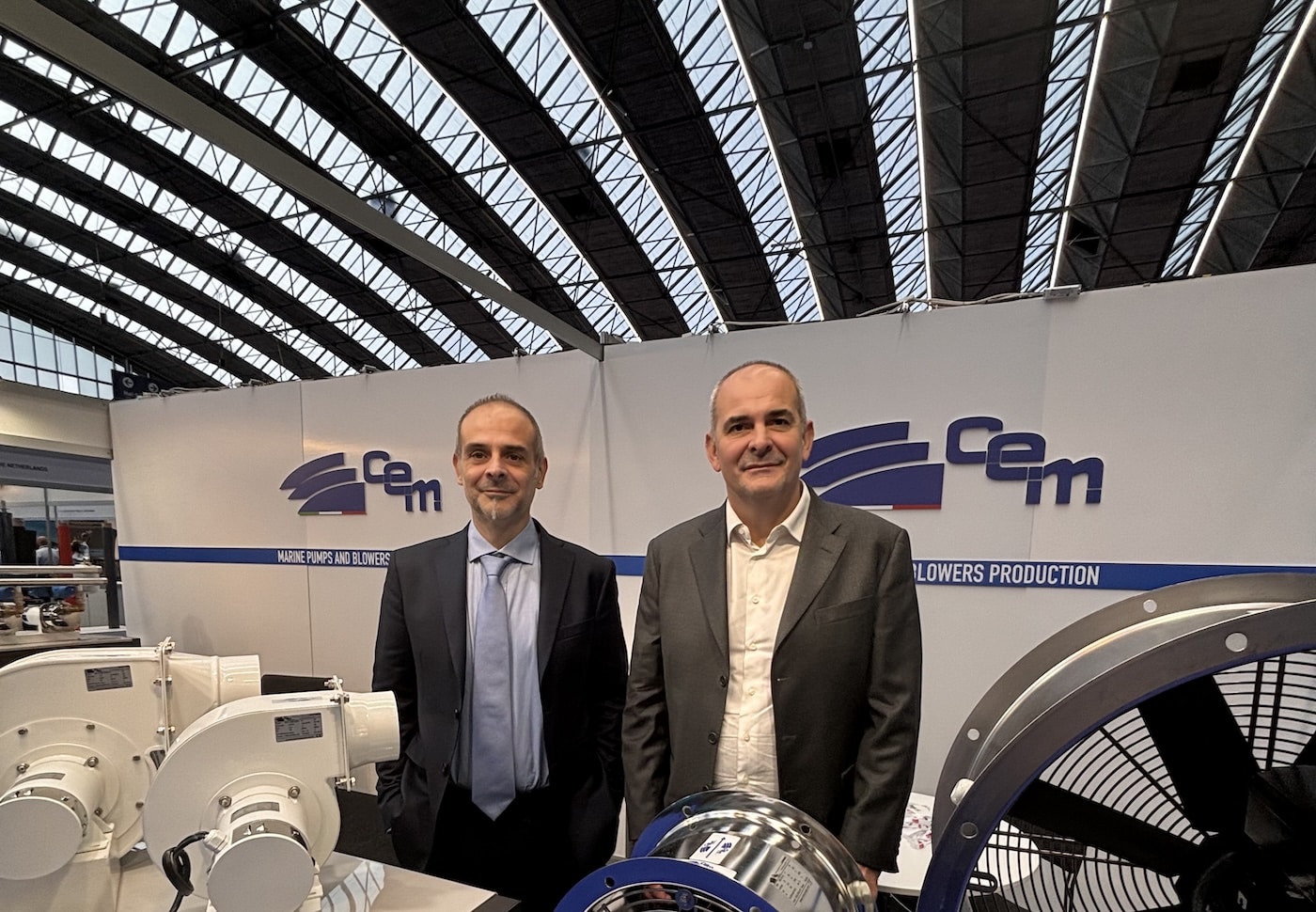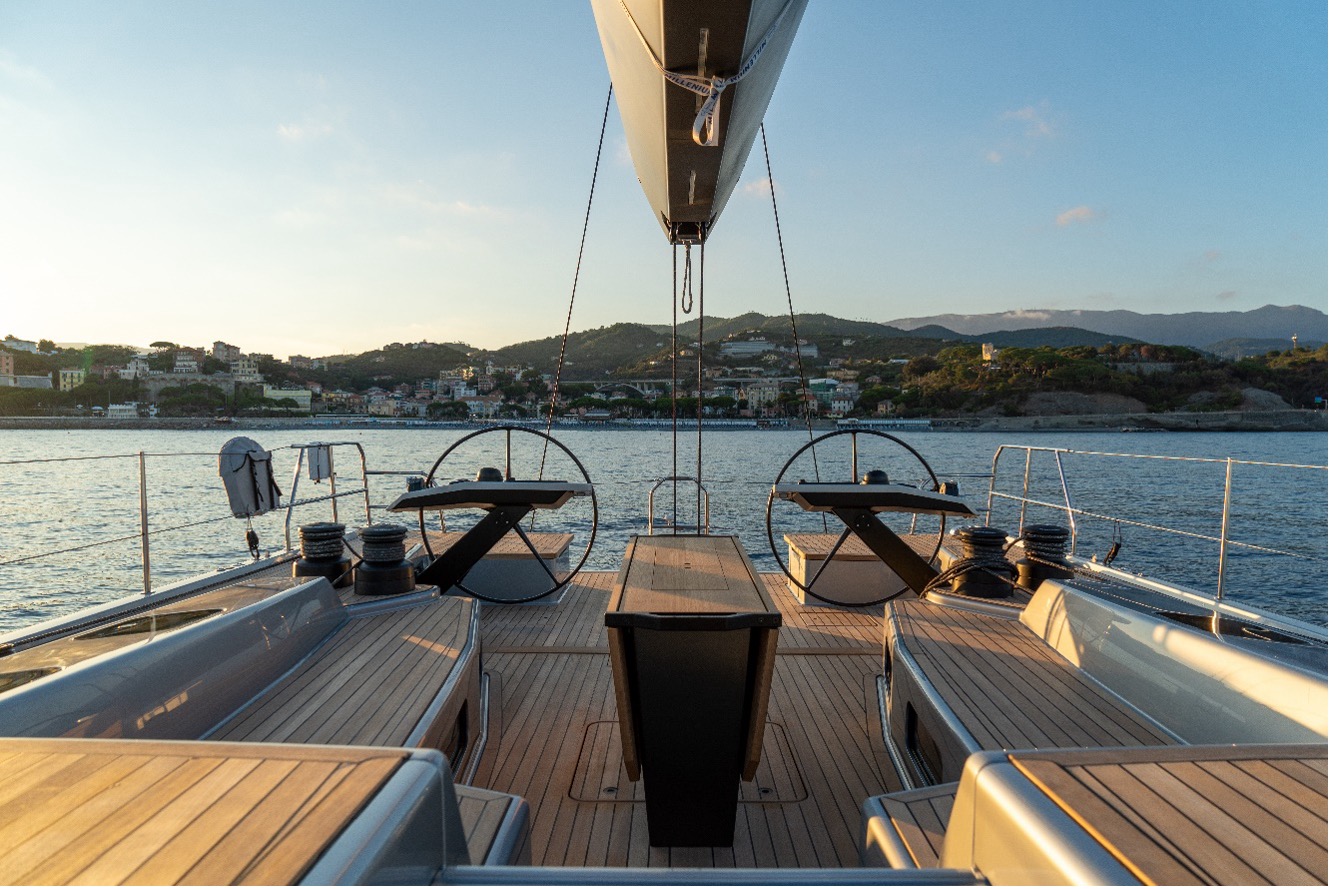Technological Dacron sails by Be1Sails : here’s what has changed with the sails produced by Be1 Sails
It’s easy to say cruising sails.
But what are the real needs of those who use their own boat to sail with their family and friends during summer holidays or spring weekends?
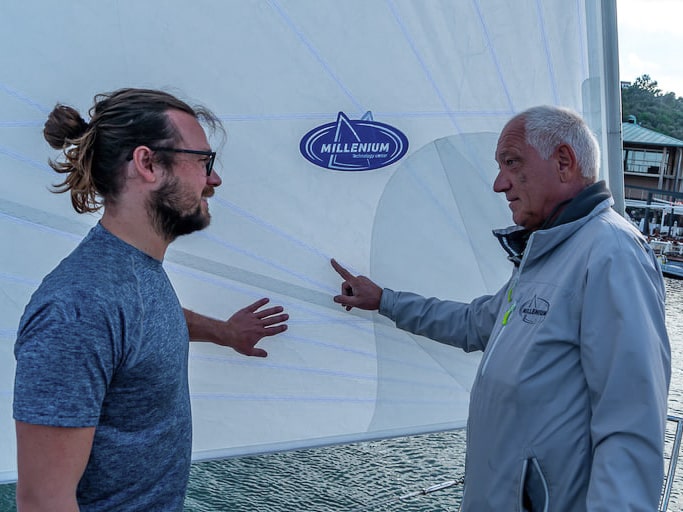
We’re talking about innovative sails that, made with a particular technological Dacron material reinforced by a special structure of synthetic fibers, keep the shape of the sails unchanged while reducing their overall weight and preserving the distinctive characteristics of endurance of Dacron.
The following is a summary of what happened during the summer cruise of the Daydreamer, the lab-boat of The International Yachting Media that, last August, tested the new sails produced by Be1 Sails covering more than a thousand of nautical miles.
To be faster means to navigate under sail always, even with little wind
Thanks to these new sails, the 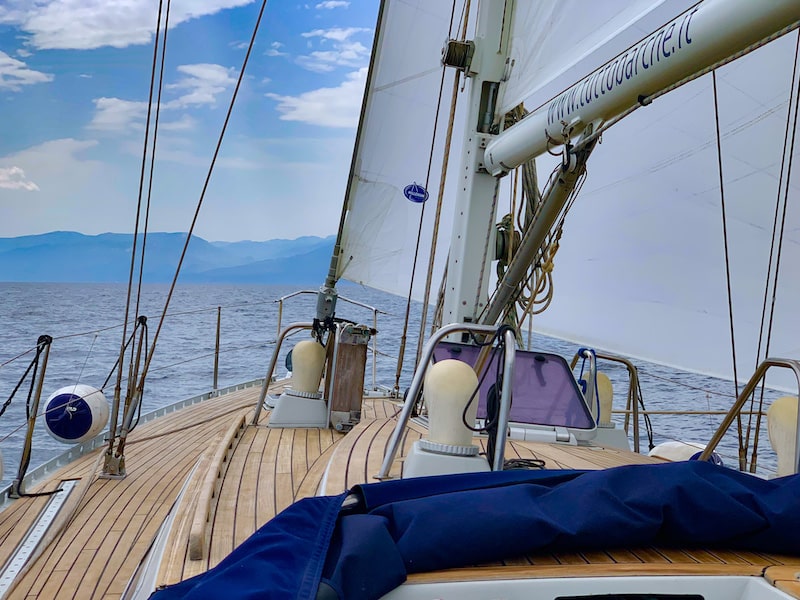
During this year’s cruise, we navigated under sail for over 80% of the time, which is much more than the previous years when, sailing with standard sails, we were forced to start the engine as the wind weakened to 9-10 knots.
Thanks to Be1 Sails technological Dacron sails, the overall performance of our Daydreamer has improved by 35-40%, which gave us the opportunity to sail about one knot and half faster and therefore to enjoy a more exciting sailing experience.
Less heeling
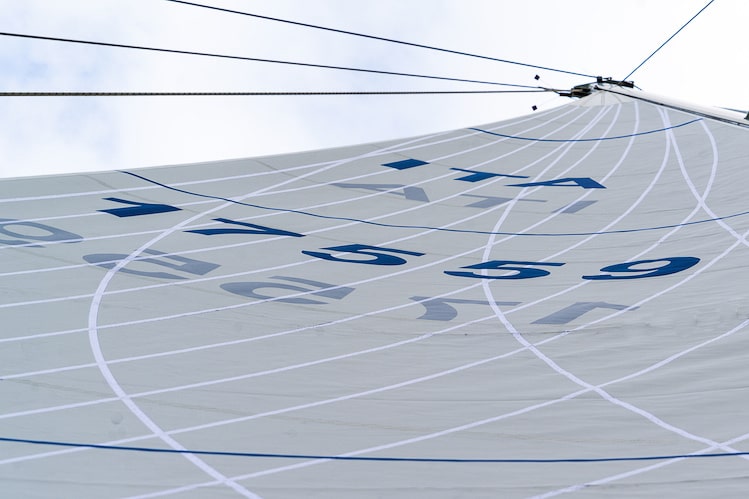
Subject to the strong winds of this summer, the sails we tested never did not suffer any deformation.
As you know, less heeling means more comfort on board, especially for those who want to enjoy a quiet cruising experience with their family.
Another important, yet often underestimated, effect produced by heeling is leeway. The new sails produced by Be1 Sails significantly reduced both the heeling and the leeway of our boat, which also contributed to considerably reduce the difference between the real course and that set on the autopilot.
Better upwind angle
The fact that the hi-tech 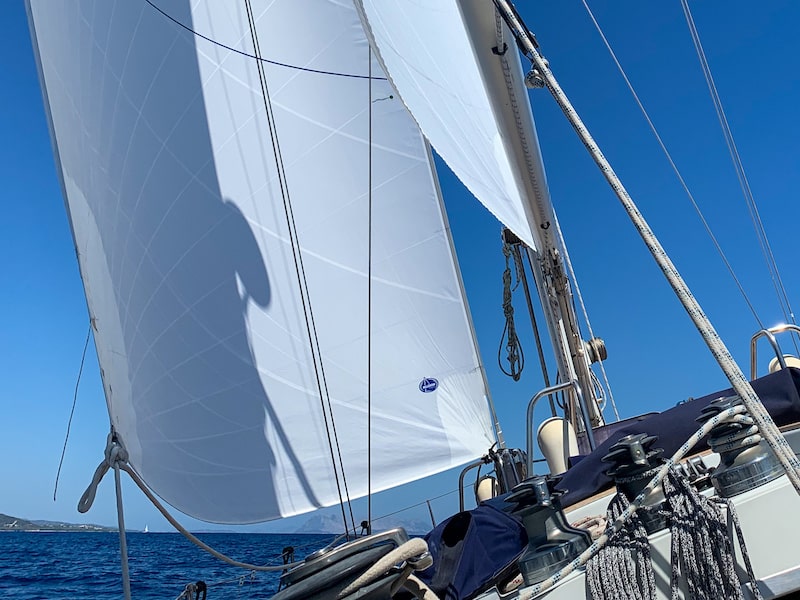
Too often, we think that our boat performs badly when sailing close to the wind. However, the problem is most probably due to traditional sails, which cannot guarantee acceptable performance when sailing close-hauled.
After having replaced the sails, our Daydreamer not only has a 5 degree closer angle but, above all, is much faster when sailing in a 30-degree apparent wind. In strong wind, the upwind angle can even reach 25 degrees without difficulty. It’s a truly important step forward.
Better shape retention
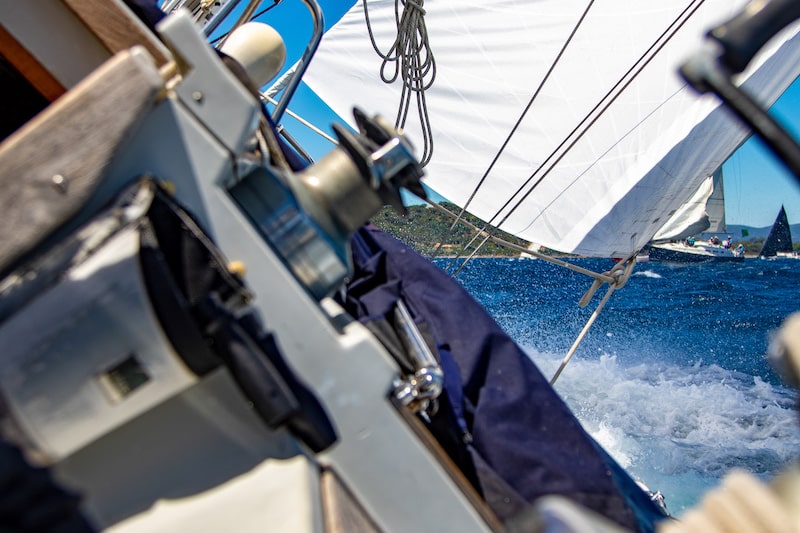
Between spring, the Giraglia Rolex Cup and our summer cruise, we covered more than 2,000 nautical miles under sail, often sailing in winds of about 30 knots and with rolled sails.
We’re therefore talking about distances that cruising boats normally cover in 3-4 seasons. Any other sail made of traditinal Dacron would have inevitably got deformed and worn.
Our sails, instead, are practically perfect and maintain the same performance than the first time we had tested them.
Less engine and less fuel
To navigate under sail often 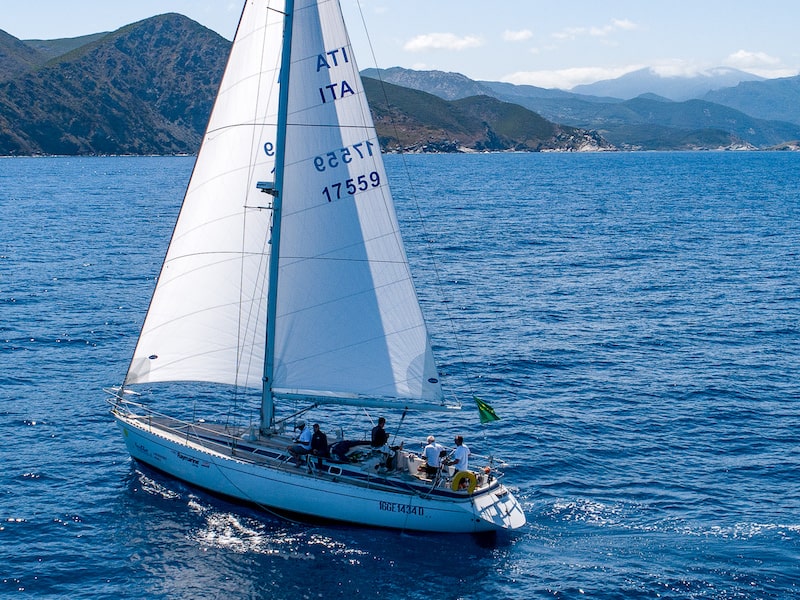
Without forgetting that sailing without the engine noise is a unique experience for which just a good set of sails is required.
Costs
Of course, these sails are a little more expensive than those in traditional Dacron. They cost around 35-40% more but performance is significantly better. Indeed, every 500 miles covered under sail, a 45-/50-foot sailboat will save about 1,500 – 2,000 euros in terms of fuel, engine services and engine wear.
This is a considerable figure that certainly repays the higher cost of the sails, especially if we consider the number of sailing seasons they can offer.
Daydreamer’s performance, before and after sails replacement
As you might imagine, I often write down the Daydreamer’s performance. This way, I could create the following table which, although made at different times, gives a sense of the increase in performance that can be expected by replacing one’s own sails. The ones on our boat were 4 seasons old and they were in traditional Dacron.
| True wind: 7/8 knots | True wind: 15/16 knots | |||||||
| Traditional sails | Technological Dacron | Traditional sails | Technological Dacron | |||||
| Apparent Angle | Speed | Apparent Angle | Speed | Apparent Angle | Speed | Apparent Angle | Speed | |
| 25 | 2.4 | 25 | 5.1 | 25 | 4.6 | 25 | 6.8 | |
| 30 | 4.9 | 30 | 6.6 | 30 | 6.7 | 30 | 8.1 | |
| 40 | 5.5 | 40 | 6.7 | 40 | 7.1 | 40 | 8.3 | |
| 50 | 5.6 | 50 | 6.7 | 50 | 7.3 | 50 | 8.4 | |
| 60 | 5.6 | 60 | 6.7 | 60 | 7.2 | 60 | 8.4 | |
| 70 | 5.4 | 70 | 6.5 | 70 | 7 | 70 | 8.1 | |
| 80 | 5.4 | 80 | 5.9 | 80 | 6.8 | 80 | 7.9 | |
| 90 | 5.2 | 90 | 5.5 | 90 | 6.6 | 90 | 7.5 | |
| 100 | 4.9 | 100 | 5 | 100 | 6.3 | 100 | 7.1 | |
| 110 | 4.6 | 110 | 4.7 | 110 | 6.1 | 110 | 6.7 | |
| 120 | 4.1 | 120 | 4.1 | 120 | 5.7 | 120 | 6.3 | |
| 130 | 3.8 | 130 | 3.9 | 130 | 5.6 | 130 | 6 | |
| 140 | 3.6 | 140 | 3.8 | 140 | 5.6 | 140 | 5.8 | |
| 150 | 3,5 | 150 | 3.8 | 150 | 5.5 | 150 | 5.7 | |
| 160 | 3.4 | 160 | 3.8 | 160 | 5.5 | 160 | 5.6 | |
Performances detected at different times but in similar conditions: slightly rough / almost calm sea.
The Daydreamer is a 1986-built Comet 460. LOA: 13.70 m , Max Beam 3.78 m , Draft 2 m
BE1 Sails – Millennium Technology Center
Via dei Carrozzieri, 5 – Località Bocchette
55040 Capezzano Pianore – Camaiore (Lucca)
Phone: 0584/969706 – 0584/969407
E-mail: info@be1sails.it




















